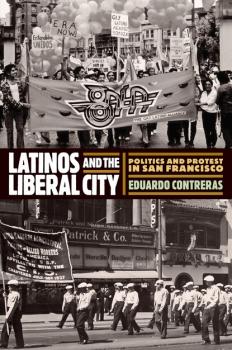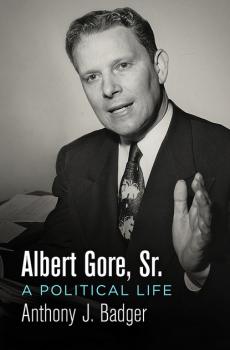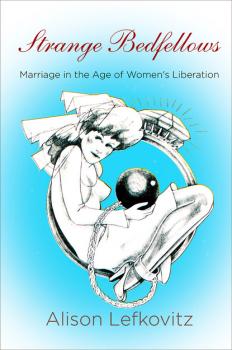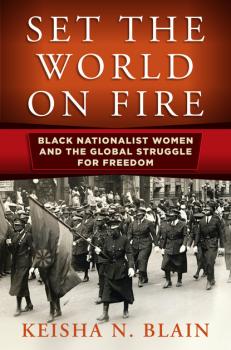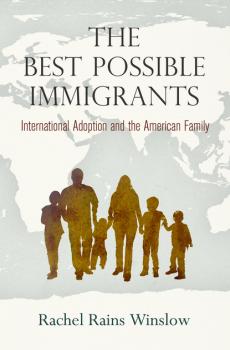Politics and Culture in Modern America
Скачать книги из серии Politics and Culture in Modern AmericaIn This Land of Plenty
On August 7, 1989, Congressman Mickey Leland departed on a flight from Addis Ababa, with his thirteen-member delegation of Ethiopian and American relief workers and policy analysts, bound for Ethiopia's border with Sudan. This was Leland's seventh official humanitarian mission in his nearly decade-long drive to transform U.S. policies toward Africa to conform to his black internationalist vision of global cooperation, antiracism, and freedom from hunger. Leland's flight never arrived at its destination. The plane crashed, with no survivors. When Leland embarked on that delegation, he was a forty-four-year-old, deeply charismatic, fiercely compassionate, black, radical American. He was also an elected Democratic representative of Houston's largely African American and Latino Eighteenth Congressional District. Above all, he was a self-proclaimed «citizen of humanity.» Throughout the 1980s, Leland and a small group of former radical-activist African American colleagues inside and outside Congress exerted outsized influence to elevate Africa's significance in American foreign affairs and to move the United States from its Cold War orientation toward a foreign policy devoted to humanitarianism, antiracism, and moral leadership. Their internationalism defined a new era of black political engagement with Africa. In This Land of Plenty presents Leland as the embodiment of larger currents in African American politics at the end of the twentieth century. But a sober look at his aspirations shows the successes and shortcomings of domestic radicalism and aspirations of politically neutral humanitarianism during the 1980s, and the extent to which the decade was a major turning point in U.S. relations with the African continent. Exploring the links between political activism, electoral politics, and international affairs, Benjamin Talton not only details Leland's political career but also examines African Americans' successes and failures in influencing U.S. foreign policy toward African and other Global South countries.
Her Neighbor's Wife
At first glance, Barbara Kalish fit the stereotype of a 1950s wife and mother. Married at eighteen, Barbara lived with her husband and two daughters in a California suburb, where she was president of the Parent-Teacher Association. At a PTA training conference in San Francisco, Barbara met Pearl, another PTA president who also had two children and happened to live only a few blocks away from her. To Barbara, Pearl was «the most gorgeous woman in the world,» and the two began an affair that lasted over a decade. Through interviews, diaries, memoirs, and letters, Her Neighbor's Wife traces the stories of hundreds of women, like Barbara Kalish, who struggled to balance marriage and same-sex desire in the postwar United States. In doing so, Lauren Jae Gutterman draws our attention away from the postwar landscape of urban gay bars and into the homes of married women, who tended to engage in affairs with wives and mothers they met in the context of their daily lives: through work, at church, or in their neighborhoods. In the late 1960s and 1970s, the lesbian feminist movement and the no-fault divorce revolution transformed the lives of wives who desired women. Women could now choose to divorce their husbands in order to lead openly lesbian or bisexual lives; increasingly, however, these women were confronted by hostile state discrimination, typically in legal battles over child custody. Well into the 1980s, many women remained ambivalent about divorce and resistant to labeling themselves as lesbian, therefore complicating a simple interpretation of their lives and relationship choices. By revealing the extent to which marriage has historically permitted space for wives' relationships with other women, Her Neighbor's Wife calls into question the presumed straightness of traditional American marriage.
Beyond the New Deal Order
Ever since introducing the concept in the late 1980s, historians have been debating the origins, nature, scope, and limitations of the New Deal order—the combination of ideas, electoral and governing strategies, redistributive social policies, and full employment economics that became the standard-bearer for political liberalism in the wake of the Great Depression and commanded Democratic majorities for decades. In the decline and break-up of the New Deal coalition historians found keys to understanding the transformations that, by the late twentieth century, were shifting American politics to the right. In Beyond the New Deal Order , contributors bring fresh perspective to the historic meaning and significance of New Deal liberalism while identifying the elements of a distinctively «neoliberal» politics that emerged in its wake. Part I offers contemporary interpretations of the New Deal with essays that focus on its approach to economic security and inequality, its view of participatory governance, and its impact on the Republican party as well as Congressional politics. Part II features essays that examine how intersectional inequities of class, race, and gender were embedded in New Deal labor law, labor standards, and economic policy and brought demands for employment, economic justice, and collective bargaining protections to the forefront of civil rights and social movement agendas throughout the postwar decades. Part III considers the precepts and defining narratives of a «post» New Deal political structure, while the closing essay contemplates the extent to which we may now be witnessing the end of a neoliberal system anchored in free-market ideology, neo-Victorian moral aspirations, and post-Communist global politics. Contributors : Eileen Boris, Angus Burgin, Gary Gerstle, Romain Huret, Meg Jacobs, Michael Kazin, Sophia Lee, Nelson Lichtenstein, Joe McCartin, Alice O'Connor, Paul Sabin, Reuel Schiller, Kit Smemo, David Stein, Jean-Christian Vinel, Julian Zelizer.
The Closet and the Cul-de-Sac
The right to privacy is a pivotal concept in the culture wars that have galvanized American politics for the past several decades. It has become a rallying point for political issues ranging from abortion to gay liberation to sex education. Yet this notion of privacy originated not only from legal arguments, nor solely from political movements on the left or the right, but instead from ambivalent moderates who valued both personal freedom and the preservation of social norms. In The Closet and the Cul-de-Sac , Clayton Howard chronicles the rise of sexual privacy as a fulcrum of American cultural politics. Beginning in the 1940s, public officials pursued an agenda that both promoted heterosexuality and made sexual privacy one of the state's key promises to its citizens. The 1944 G.I. Bill, for example, excluded gay veterans and enfranchised married ones in its dispersal of housing benefits. At the same time, officials required secluded bedrooms in new suburban homes and created educational campaigns designed to teach children respect for parents' privacy. In the following decades, measures such as these helped to concentrate middle-class families in the suburbs and gay men and lesbians in cities. In the 1960s and 1970s, the gay rights movement invoked privacy to attack repressive antigay laws, while social conservatives criticized tolerance for LGBT people as an assault on their own privacy. Many self-identified moderates, however, used identical rhetoric to distance themselves from both the discriminatory language of the religious right and the perceived excesses of the gay freedom struggle. Using the Bay Area as a case study, Howard places these moderates at the center of postwar American politics and shows how the region's burgeoning suburbs reacted to increasing gay activism in San Francisco. The Closet and the Cul-de-Sac offers specific examples of the ways in which government policies shaped many Americans' attitudes about sexuality and privacy and the ways in which citizens mobilized to reshape them.
Latinos and the Liberal City
The «Latino vote» has become a mantra in political media, as journalists, pundits, and social scientists regularly weigh in on Latinos' loyalty to the Democratic Party and the significance of their electoral participation. But how and why did Latinos' liberal orientation take hold? What has this political inclination meant—and how has it unfolded—over time? In Latinos and the Liberal City , Eduardo Contreras addresses these questions, offering a bold, textured, and inclusive interpretation of the nature and character of Latino politics in America's shifting social and cultural landscape. Contreras argues that Latinos' political life and aspirations have been marked by diversity and contestation yet consistently influenced by the ideologies of liberalism and latinidad: while the principles of activist government, social reform, freedom, and progress sustained liberalism, latinidad came to rest on promoting unity and commonality among Latinos. Contreras centers this compelling narrative on San Francisco—America's liberal city par excellence—examining the role of its Latino communities in local politics from the 1930s to the 1970s. By the early twentieth century, San Francisco's residents of Latin American ancestry traced their heritage to nations including Mexico, Puerto Rico, Nicaragua, El Salvador, Chile, and Peru. These communities formed part of the New Deal coalition, defended workers' rights with gusto, and joined the crusade for racial equality decades before the 1960s. In the mid- to late postwar era, Latinos expanded claims for recognition and inclusion while participating in movements and campaigns for socioeconomic advancement, female autonomy, gay liberation, and rent control. Latinos and the Liberal City makes clear that the local public sphere nurtured Latinos' political subjectivities and that their politicization contributed to the vibrancy of San Francisco's political culture.
Albert Gore, Sr.
In chronicling the life and career of Albert Gore, Sr., historian Anthony J. Badger seeks not just to explore the successes and failures of an important political figure who spent more than three decades in the national eye—and whose son would become Vice President of the United States—but also to explain the dramatic changes in the South that led to national political realignment. Born on a small farm in the hills of Tennessee, Gore served in Congress from 1938 to 1970, first in the House of Representatives and then in the Senate. During that time, the United States became a global superpower and the South a two party desegregated region. Gore, whom Badger describes as a policy-oriented liberal, saw the federal government as the answer to the South's problems. He held a resilient faith, according to Badger, in the federal government to regulate wages and prices in World War II, to further social welfare through the New Deal and the Great Society, and to promote economic growth and transform the infrastructure of the South. Gore worked to make Tennessee the «atomic capital» of the nation and to protect the Tennessee Valley Authority, while at the same time cosponsoring legislation to create the national highway system. He was more cautious in his approach to civil rights; though bolder than his moderate Southern peers, he struggled to adjust to the shifting political ground of the 1960s. His career was defined by his relationship with Lyndon Johnson, whose Vietnam policies Gore bitterly opposed. The injection of Christian perspectives into the state's politics ultimately distanced Gore's worldview from that of his constituents. Altogether, Gore's political rise and fall, Badger argues, illuminates the significance of race, religion, and class in the creation of the modern South.
Blue-Collar Conservatism
The postwar United States has experienced many forms of populist politics, none more consequential than that of the blue-collar white ethnics who brought figures like Ronald Reagan and Donald Trump to the White House. Blue-Collar Conservatism traces the rise of this little-understood, easily caricatured variant of populism by presenting a nuanced portrait of the supporters of Philadelphia Mayor Frank Rizzo. In 1971, Frank Rizzo became the first former police commissioner elected mayor of a major American city. Despite serving as a Democrat, Rizzo cultivated his base of support by calling for «law and order» and opposing programs like public housing, school busing, affirmative action, and other policies his supporters deemed unearned advantages for nonwhites. Out of this engagement with the interwoven politics of law enforcement, school desegregation, equal employment, and urban housing, Timothy J. Lombardo argues, blue-collar populism arose. Based on extensive archival research, and with an emphasis on interrelated changes to urban space and blue-collar culture, Blue-Collar Conservatism challenges the familiar backlash narrative, instead contextualizing blue-collar politics within postwar urban and economic crises. Historian and Philadelphia-native Lombardo demonstrates how blue-collar whites did not immediately abandon welfare liberalism but instead selectively rejected liberal policies based on culturally defined ideas of privilege, disadvantage, identity, and entitlement. While grounding his analysis in the postwar era's familiar racial fissures, Lombardo also emphasizes class identity as an indispensable driver of blue-collar political engagement. Blue-Collar Conservatism ultimately shows how this combination of factors created one of the least understood but most significant political developments in recent American history.
Strange Bedfellows
In the inaugural issue of Ms. Magazine , the feminist activist Judy Syfers proclaimed that she «would like a wife,» offering a wry critique of the state of marriage in modern America. After all, she observed, a wife could provide Syfers with free childcare and housecleaning services as well as wages from a job. Outside the pages of Ms. , divorced men's rights activist Charles Metz opened his own manifesto on marriage reform with a triumphant recognition that «noise is swelling from hundreds of thousands of divorced male victims.» In the 1960s and 70s, a broad array of Americans identified marriage as a problem, and according to Alison Lefkovitz, the subsequent changes to marriage law at the state and federal levels constituted a social and legal revolution. The law had long imposed breadwinner and homemaker roles on husbands and wives respectively. In the 1960s, state legislatures heeded the calls of divorced men and feminist activists, but their reforms, such as no-fault divorce, generally benefitted husbands more than wives. Meanwhile, radical feminists, welfare rights activists, gay liberationists, and immigrant spouses fought for a much broader agenda, such as the extension of gender-neutral financial obligations to all families or the separation of benefits from family relationships entirely. But a host of conservatives stymied this broader revolution. Therefore, even the modest victories that feminists won eluded less prosperous Americans—marriage rights were available to those who could afford them. Examining the effects of law and politics on the intimate space of the home, Strange Bedfellows recounts how the marriage revolution at once instituted formal legal equality while also creating new forms of political and economic inequality that historians—like most Americans—have yet to fully understand.
Set the World on Fire
In 1932, Mittie Maude Lena Gordon spoke to a crowd of black Chicagoans at the old Jack Johnson boxing ring, rallying their support for emigration to West Africa. In 1937, Celia Jane Allen traveled to Jim Crow Mississippi to organize rural black workers around black nationalist causes. In the late 1940s, from her home in Kingston, Jamaica, Amy Jacques Garvey launched an extensive letter-writing campaign to defend the Greater Liberia Bill, which would relocate 13 million black Americans to West Africa. Gordon, Allen, and Jacques Garvey—as well as Maymie De Mena, Ethel Collins, Amy Ashwood, and Ethel Waddell—are part of an overlooked and understudied group of black women who take center stage in Set the World on Fire , the first book to examine how black nationalist women engaged in national and global politics from the early twentieth century to the 1960s. Historians of the era generally portray the period between the Garvey movement of the 1920s and the Black Power movement of the 1960s as one of declining black nationalist activism, but Keisha N. Blain reframes the Great Depression, World War II, and the early Cold War as significant eras of black nationalist—and particularly, black nationalist women's—ferment. In Chicago, Harlem, and the Mississippi Delta, from Britain to Jamaica, these women built alliances with people of color around the globe, agitating for the rights and liberation of black people in the United States and across the African diaspora. As pragmatic activists, they employed multiple protest strategies and tactics, combined numerous religious and political ideologies, and forged unlikely alliances in their struggles for freedom. Drawing on a variety of previously untapped sources, including newspapers, government records, songs, and poetry, Set the World on Fire highlights the flexibility, adaptability, and experimentation of black women leaders who demanded equal recognition and participation in global civil society.
The Best Possible Immigrants
Prior to World War II, international adoption was virtually unknown, but in the twenty-first century, it has become a common practice, touching almost every American. How did the adoption of foreign children by U.S. families become an essential part of American culture in such a short period of time? Rachel Rains Winslow investigates this question, following the trail from Europe to South Korea and then to Vietnam. Drawing on a wide range of political and cultural sources, The Best Possible Immigrants shows how a combination of domestic trends, foreign policies, and international instabilities created an environment in which adoption flourished. Winslow contends that international adoption succeeded as a long-term solution to child welfare not because it was in the interest of one group but because it was in the interest of many. Focusing on the three decades after World War II, she argues that the system came about through the work of governments, social welfare professionals, volunteers, national and local media, adoptive parents, and prospective adoptive parents. In her chronicle, Winslow not only reveals the diversity of interests at play but also shows the underlying character of the U.S. social welfare state and international humanitarianism. In so doing, she sheds light on the shifting ideologies of family in the postwar era, underscoring the important cultural work at the center of policy efforts and state projects. The Best Possible Immigrants is a fascinating story about the role private citizens and organizations played in adoption history as well as their impact on state-formation, lawmaking, and U.S. foreign policy.




